|
My Links
|
M270 MLRS Self-Propelled Loader/Launcher (SPLL)
The Multiple Launch Rocket System (MLRS) provides the Army an all-weather, indirect, area fire weapon system to strike counterfire, air defense, armored formations, and other high-payoff targets at all depths of the tactical battlefield. Primary missions of MLRS include the suppression, neutralization and destruction of threat fire support and forward area air defense targets. The Multiple Launch Rocket System is a versatile weapon system that supplements traditional cannon artillery fires by delivering large volumes of firepower in a short time against critical, time-sensitive targets. These targets often include enemy artillery, air defense systems, mechanized units, and personnel. MLRS units can use their system's "shoot and scoot" capability to survive while providing fire support for attacking manuever elements. MLRS is not intended to replace cannon artillery, but has been designed to complement it. MLRS performed extremely well in Operation Desert Storm (ODS) in which significant numbers of launchers were deployed. All operational requirement were met and, in most cases, exceeded levels for readiness, reliability and maintainability. MLRS units from the United Kingdom were also involved in ODS and proved the value of this multi-national system. The new upgrade MLRS (Deep Attack Launcher) also demonstrated its enormous capability during the first operational firings of the longer range ATACMS. The Army has initiated an extensive improvements program to enhance MLRS's basic capability. The improvements are in three areas--an extended range rocket (from 32 kilometers to 50 kilometers), an improved fire control system, and an improved launcher mechanical system. The extended range rocket has a reduced payload of M77 submunitions and a longer rocket motor to enable attainment of the additional 18 kilometers of flight. The improved fire control system includes a meteorological sensor, a positioning navigation unit combined with global positioning system and a new launcher interface unit with increased throughput capacities in the main and communication processors. The improved launcher mechanical systems consists of non-developmental item improvements to the elevation transmission, elevation motor, azimuth motor and motor control. The MLRS M270 Launcher, a derivative of the Bradley Fighting Vehicle (BFV), is the standard U.S. Army platform for firing surface to surface artillery rockets and missiles. The Armored Vehicle Mounted Rocket Launcher (M270) is a full-tracked, self-propelled launcher/loader designed to launch 12 tactical rockets and re-deploy before enemy determination of launch position (shoot and scoot). The launch platform is also used to launch the Army Tactical Missile System (Army TACMS) and is capable of launching all M270 Family of Munitions (MFOM) tactical rocket/missile variants. The launcher consists of six rockets, each of which are mounted and controlled in both azimuth and elevation. It has an automated control system for aiming that automatically corrects for launcher cant and ambient temperature, a directional reference system to obtain azimuth elevation and cant angles, and a FCS which is operated from a man-rated vehicle cab. The launcher platform structure provides a "self-loading" capability. The M270 launcher has a maximum speed of 64 Km/hour, with a maximum range of 435 Km. It is capable of climbing a 60 degree slope and a one meter wall. Ordnance options include the MFOM (all variants of the MLRS rocket and Army TACMS missile). The M270 can load, arm, and fire a 12 rocket ripple within ripple within five minutes. M270 launchers are deployed three per battery and 29 per battalion. The M270 launcher can be configured for transport by Air Force C-141 aircraft on a limited basis. The M270 launcher is also transportable by Air Force C-5 and C-17 aircraft. M270 MLRS Self-Propelled Loader/Launcher (SPLL) Photos 
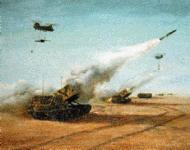
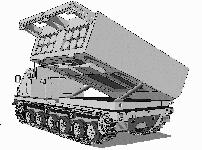
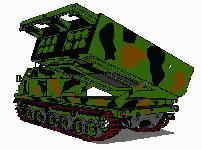
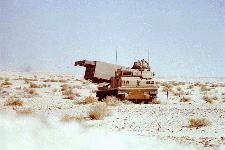
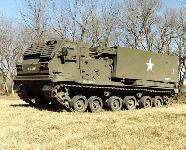

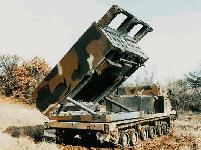
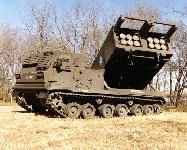
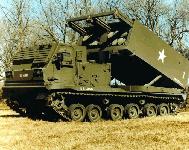
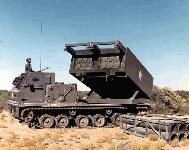
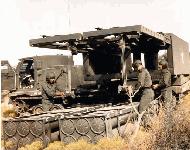
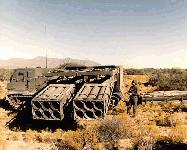
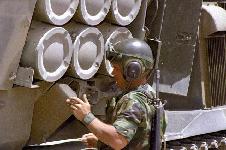



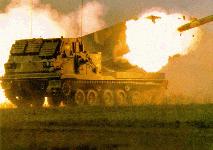

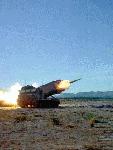

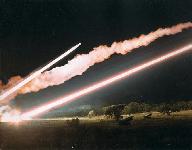
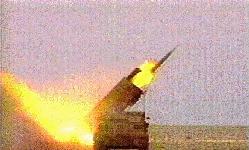
|
| Copyright © 2002, Josh Riccio, All Rights Reserved. | |